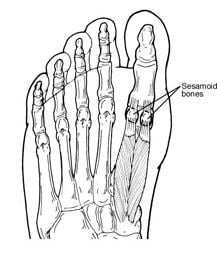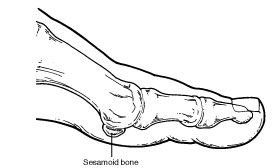SEBASTIAN LOCATION (New Location!)
13852 US Hwy 1
Sebastian, FL 32958
VERO BEACH LOCATION
- AminoFix injection for Plantar Fasciitis & Achilles Tendonitis
- Arch Pain
- Bunions And Bursitis
- Certified Wound Care Specialist
- Comprehensive Foot And Ankle Surgery
- Congenital Foot And Ankle Deformities
- Corns And Calluses
- Diabetic Foot Care
- Flat Feet
- Foot And Ankle Fractures
- Fungal Skin Infections
- Hammertoes
- Laser treatment for fungal nails
- Heel Spurs
- Metatarsal Disorders
- Pediatric Foot And Ankle Problems & Injuries
- Plantar Fasciitis
- Plantar Warts
- Reconstructive Surgery Of The Foot And Ankle
- Sports Related Injuries
- Traumatic Surgery Of The Foot And Ankle
- Treatment Of Charcot Foot And Ankle Deformities
- Treatment Of Ingrown, Fungal And Thickened Nail Conditions
Welcome to the Patient Information Center! Here you will find information about the most common foot and ankle ailments. Click on any of the issues below to find out more about specific problems and what treatment options are available. Here you will also find links to interesting websites pertaining to podiatry. If you have any questions, feel free to Contact Us through the website or give us a call!
Common Ailments
- Achilles Tendon Disorders
- Acute Inflammation
- Ankle Fracture
- Ankle Sprain
- Bunions
- Cavus Foot
- Charcot Foot
- Chronic Ankle Instability
- Crossover Toe
- Diabetic Complications and Amputation Prevention
- Diabetic Foot Care Guidelines
- Diabetic Peripheral Neuropathy
- Equinus
- Flexible Flatfoot
- Fractures of the Fifth Metatarsal
- Ganglion Cyst
- Gout
- Haglund’s Deformity (pump bump)
- Hallux Rigidus
- Hammertoes
- Heel Pain
- Ingrown Toenail
- Lisfranc Injuries
- Malignant Melanoma of the Foot
- Morton’s Neuroma
- Osteoarthritis of the Foot and Ankle
- Pediatric Flatfoot
- Pediatric Heel Pain
- Peroneal Tendon Injuries
- Plantar Fasciitis (Heel Pain)
- Plantar Wart (Verruca Plantaris)
- Posterior Tibial
- Puncture Wounds
- Rheumatoid Arthritis in the Foot and Ankle
- Sesamoid Injuries in the Foot
- Tailor’s Bunion
- Tarsal Coalition
- Tarsal Tunnel Syndrome
- Toe and Metatarsal Fractures
Helpful Information & Links
The path to board certification by the American Board of Podiatric Surgery (ABPS) begins after graduating from an approved podiatric surgical residency program after which our doctors pass a rigorous written examination to become board qualified. Next, doctors spent up to 6 years of their initial practice time collecting various patient cases which demonstrate to the ABPS their decision-making, competency, and skills as a foot and ankle surgeon. After submission of these cases, detailed review, and acceptance to the ABPS, doctors sit for the ABPS oral examination held in Chicago, IL.
- Dr. Paradoa has satisfied requirements by the ABPS to become board certified in Foot, Reconstructive Rearfoot/Ankle Surgery.
Our patients can feel confident that they are being treated by a foot
and ankle surgeon who has dedicated years of her education, training,
and experience to achieving board certification status by the American
Board of Podiatric Surgery.
The American Board of Podiatric Surgery website
has a wealth of information about podiatry and the requirements that
must be met.
A Doctor of Podiatric Medicine (DPM) is to the foot and ankle what a dentist is to the mouth, or an ophthalmologist to the eye — a doctor specializing in the prevention, diagnosis and treatment of foot disorders resulting from injury or disease. A DPM makes independent judgments, prescribes medications and performs surgery. The human foot has a complex interrelation with the rest of the body which means that it may be the first area to show signs of serious conditions such as diabetes and cardiovascular disease. Since the podiatric physician is often the first to detect symptoms of these disorders, he or she becomes a vital and sometimes lifesaving link in the health care team.
The American College of Foot & Ankle Surgeons is a professional society of thousands of foot and ankle surgeons. Their website contains a plethora of information about advances in podiatry and connects its members to share that knowledge.
FootHealthFacts.org is the official consumer website of the American College of Foot and Ankle Surgeons. This is a wonderful resource of information! From what foot injuries Olympians have suffered from during the 2012 London Olympics to a growing trend in lawn mower accidents, you will find interesting, informative and compelling articles in the world of Podiatry.
Patient Forms
Please print and fill out these forms so we can expedite your first visit:
In order to view or print these forms you will need Adobe Acrobat Reader
installed. Click here to download it: 
- Home >
- Articles >
- Bone/Joint/Tendon >
- Sesamoid Injuries in the Foot
What is a Sesamoid?
 A sesamoid is a bone embedded in a tendon. Sesamoids are found in several joints in the body. In the normal foot, the sesamoids are two pea-shaped bones located in the ball of the foot, beneath the big toe joint.
A sesamoid is a bone embedded in a tendon. Sesamoids are found in several joints in the body. In the normal foot, the sesamoids are two pea-shaped bones located in the ball of the foot, beneath the big toe joint.
Acting as a pulley for tendons, the sesamoids help the big toe move normally and provide leverage when the big toe “pushes off” during walking and running. The sesamoids also serve as a weight-bearing surface for the first metatarsal bone (the long bone connected to the big toe), absorbing the weight placed on the ball of the foot when walking, running, and jumping.
Sesamoid injuries can involve the bones, tendons, and/or surrounding tissue in the joint. They are often associated with activities requiring increased pressure on the ball of the foot, such as running, basketball, football, golf, tennis, and ballet. In addition, people with high arches are at risk for developing sesamoid problems. Frequent wearing of high-heeled shoes can also be a contributing factor.
Types of Sesamoid Injuries in the Foot
There are three types of sesamoid injuries in the foot:
- Turf toe. This is an injury of the soft tissue surrounding the big toe joint. It usually occurs when the big toe joint is extended beyond its normal range. Turf toe causes immediate, sharp pain and swelling. It usually affects the entire big toe joint and limits the motion of the toe. Turf toe may result in an injury to the soft tissue attached to the sesamoid or a fracture of the sesamoid. Sometimes a “pop” is felt at the moment of injury.
-
Fracture. A fracture (break) in a sesamoid bone can be either acute or chronic.
-
 An acute fracture is caused by trauma – a direct blow or impact to the bone. An acute sesamoid fracture produces immediate pain and swelling at the site of the break, but usually does not affect the entire big toe joint.
An acute fracture is caused by trauma – a direct blow or impact to the bone. An acute sesamoid fracture produces immediate pain and swelling at the site of the break, but usually does not affect the entire big toe joint. - A chronic fracture is a stress fracture (a hairline break usually caused by repetitive stress or overuse). A chronic sesamoid fracture produces longstanding pain in the ball of the foot beneath the big toe joint. The pain, which tends to come and go, generally is aggravated with activity and relieved with rest.
-
- Sesamoiditis. This is an overuse injury involving chronic inflammation of the sesamoid bones and the tendons involved with those bones. Sesamoiditis is caused by increased pressure to the sesamoids. Often, sesamoiditis is associated with a dull, longstanding pain beneath the big toe joint. The pain comes and goes, usually occurring with certain shoes or certain activities.
Diagnosis
In diagnosing a sesamoid injury, the foot and ankle surgeon will examine the foot, focusing on the big toe joint. The surgeon will press on the big toe, move it up and down, and may assess the patient’s walking and evaluate the wear pattern on the patient’s shoes. X-rays are ordered, and in some cases, advanced imaging studies may be ordered.
Non-Surgical Treatment
Non-surgical treatment for sesamoid injuries of the foot may include one or more of the following options, depending on the type of injury and degree of severity:
- Padding, strapping, or taping. A pad may be placed in the shoe to cushion the inflamed sesamoid area, or the toe may be taped or strapped to relieve that area of tension.
- Immobilization. The foot may be placed in a cast or removable walking cast. Crutches may be used to prevent placing weight on the foot.
- Oral medications. Nonsteroidal anti-inflammatory drugs (NSAIDs), such as ibuprofen, are often helpful in reducing the pain and inflammation.
- Physical therapy. The rehabilitation period following immobilization sometimes includes physical therapy, such as exercises (range-of-motion, strengthening, and conditioning) and ultrasound therapy.
- Steroid injections. In some cases, cortisone is injected in the joint to reduce pain and inflammation.
- Orthotic devices. Custom orthotic devices that fit into the shoe may be prescribed for long-term treatment of sesamoiditis to balance the pressure placed on the ball of the foot.
When is Surgery Needed?
When sesamoid injuries fail to respond to non-surgical treatment, surgery may be required. The foot and ankle surgeon will determine the type of procedure that is best suited to the individual patient.
Appointment Request
Our Locations
Find us on the map
Hours of Operation
Our Regular Schedule
Vero Beach Location
Monday:
9:00 AM-5:00 PM
Tuesday:
9:00 AM-5:00 PM
Wednesday:
9:00 AM-5:00 PM
Thursday:
9:00 AM-5:00 PM
Friday:
9:00 AM-12:00 PM
Saturday:
Closed
Sunday:
Closed
Sebastian Location
Monday:
9:00 AM-5:00 PM
Tuesday:
9:00 AM-5:00 PM
Wednesday:
9:00 AM-5:00 PM
Thursday:
9:00 AM-5:00 PM
Friday:
9:00 AM-12:00 PM
Saturday:
Closed
Sunday:
Closed

 An acute fracture is caused by trauma – a direct blow or impact to the bone. An acute sesamoid fracture produces immediate pain and swelling at the site of the break, but usually does not affect the entire big toe joint.
An acute fracture is caused by trauma – a direct blow or impact to the bone. An acute sesamoid fracture produces immediate pain and swelling at the site of the break, but usually does not affect the entire big toe joint.